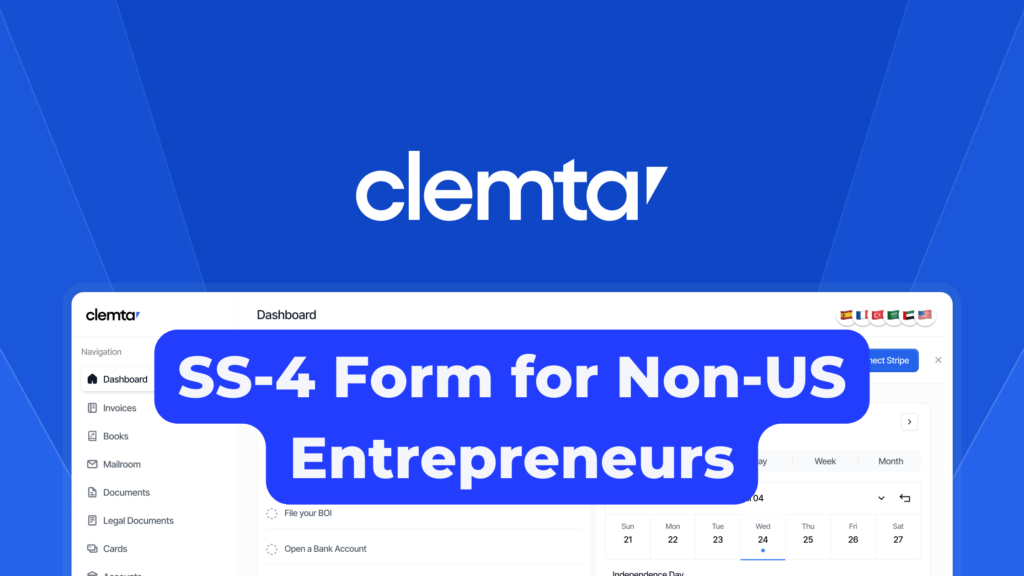Annual payments and meeting both state and federal obligations can be challenging for an inactive company. Closing a dormant company can often be the solution, freeing you from unnecessary taxes and registered agent debts. At Clemta, we aim to assist you every step of the way, providing guidance for every question you may encounter during the company dissolution process.
What is Company Dissolution?
The official cancellation of a company’s legal existence is called a dissolution process. The process may occur involuntarily or voluntarily. If the dissolution occurs involuntarily, the process is called administrative dissolution.
What is administrative company dissolution?
An LLC or corporation has annual obligations such as filing annual reports, keeping an active registered agent, paying state taxes, etc. The obligations may vary according to the formation state. If the company fails to meet one of these obligations, the Secretary of State dissolves the company involuntarily, and this process is called administrative dissolution.
Why is it important to dissolve the business formally?
The Dissolution process is an essential part of closing the business since the process eliminates the individual liability of your company’s members or shareholders. Those interested in the company may be subject to lawsuits or penalties if the company is not properly dissolved. The process takes place stateside and on the federal side.
It would be best if you ended the business entity’s legal existence with the state stateside. The legal existence was built when an LLC files an “Articles of Organization” and when a corporation files an” Articles of Incorporation”. The legal existence can be ended by filing “Articles of Dissolution”. You may find the details below.
When you close a business and don’t file an “Articles of Dissolution”, the state will assume you’re still in operation and require you to file annual reports. You may check the requirements for closing the business on the federal side on the IRS (Internal Revenue Service) website.
It’s a hectic time with a lot of steps. Here are standard processes for dissolving a company to help you get started.
Step by step company dissolution process
-
STEP 1: Approval of the owners
For C-Corps, the bylaws document in the post-incorporation documentation outlines the dissolution process. For LLCs, the Operating Agreement document outlines the dissolution process.
Needed approvals of the owners should be taken according to these documents as the first step of the dissolution process. You should hold a formal vote on dissolving the company and record the vote in corporate record documents. Single-member LLCs will not need to complete approval of the owner’s step.
-
STEP 2: Registered Agent
Your company should have an active registered agent according to company history with the state. The Articles of Dissolution may be rejected If the company doesn’t have an active registered agent when the certificate is filed.
You may reach out to Clemta If you currently don’t have an active registered agent for your company. Registered agent service is included in both packages of Clemta but can also be purchased as a service separately.
-
STEP 3: Compliance with State
Check with the state you have incorporated if you have an annual report or state taxes. If your company has licensed or filed business names, contact the appropriate licensing authorities to have them revoked.
-
STEP 4: State Dissolution: Filing Articles of Company Dissolution
A corporation or an LLC is a legal entity formed under the state’s authority so the state can only dissolve the company.
Please check the requirements for filing a Certificate of Dissolution aka Articles of Dissolution in the state you’ve incorporated your company.
Here is an example of Articles of Dissolution in the state of Wyoming for Limited Liability Companies:
How much will it cost to file Articles of Company Dissolution?
The specific procedures and fees vary by state, but you should file the Articles of Dissolution form by mail and pay a filing fee in most states. To review the fee in your state, click here, fill in the form with the state and entity type information; Clemta representatives will let you know about the fees directly.
A copy of the filed Articles of Dissolution will be mailed to you after completing the filing.
Here is an example of Articles of Dissolution in the state of Wyoming for C-Corporations:
What happens to the licenses in other states?
If the corporation or company is licensed to do business in other states, it should file an Articles of Dissolution in those states. The licensing to do business in other states is called a Foreign Qualification.
If you don’t file the dissolution certificate in those states, your company may be held liable for taxes or annual reports. You may check our blog post here for detailed information about foreign qualifications.
-
STEP 5: Filing a Final Federal Return with the IRS
A final federal return should be filed to the IRS for the year the business gets dissolved. The return is filed as a regular return but should be marked as a final return in the federal filing forms.
Please consult a CPA (Certified Public Accountant) for federal tax requirements for your company before the dissolution process.
This stage is crucial because it will provide your company with a “tax clearance” that will make the rest of the procedure easier. You may check our blog post-Federal Tax Ultimate Guide for more information about federal tax returns.
-
STEP 6: Closing the EIN account
EIN cannot be canceled or closed because The IRS needs to refer to the EIN to quickly locate the business’s tax filings if it ever needs to in the future.
If the business receives an EIN but later determines that it is not needed, the IRS does not cancel the EIN, but it can close your business account. For you to close your business account with the IRS, someone authorized on behalf of the company must send a letter to the IRS. You may read our blog post here regarding what happens to your EIN when you dissolve.
-
STEP 7: Distribution of company assets to shareholders/members
Assets are usually distributed according to the percentage of ownership held by shareholders or members. The ownership rate is determined with post-incorporation documentation with shareholders in corporations and an Operating Agreement with members in LLC entity types.
Please also make sure that you have reported the distributions to the IRS.
What is the difference between liquidation and company dissolution?
When there are still assets and liabilities to be dealt with in the company, liquidation is a formal way of terminating a business. The assets and liabilities will be reallocated among the company’s owners and creditors. A voluntarily legal closing of a business is called dissolution, whereas liquidation is the sale of a company’s assets to pay creditors.
-
STEP 8: Closing all financial accounts
All financial accounts should be closed, including business bank and credit accounts. Clemta completes these steps on behalf of your company promptly, making the process easy and stress-free for you.
Happy to announce that Clemta offers a solution covering the whole dissolution process. With Clemta, you can now dissolve your company from anywhere in the world!
For more information on how to dissolve or revive your corporation through Clemta and how much it will cost you, please complete the dissolution information form for our representatives to reach out.
Click here to get started with your company dissolution!
If you have any questions, you may reach out to our agents at [email protected]







